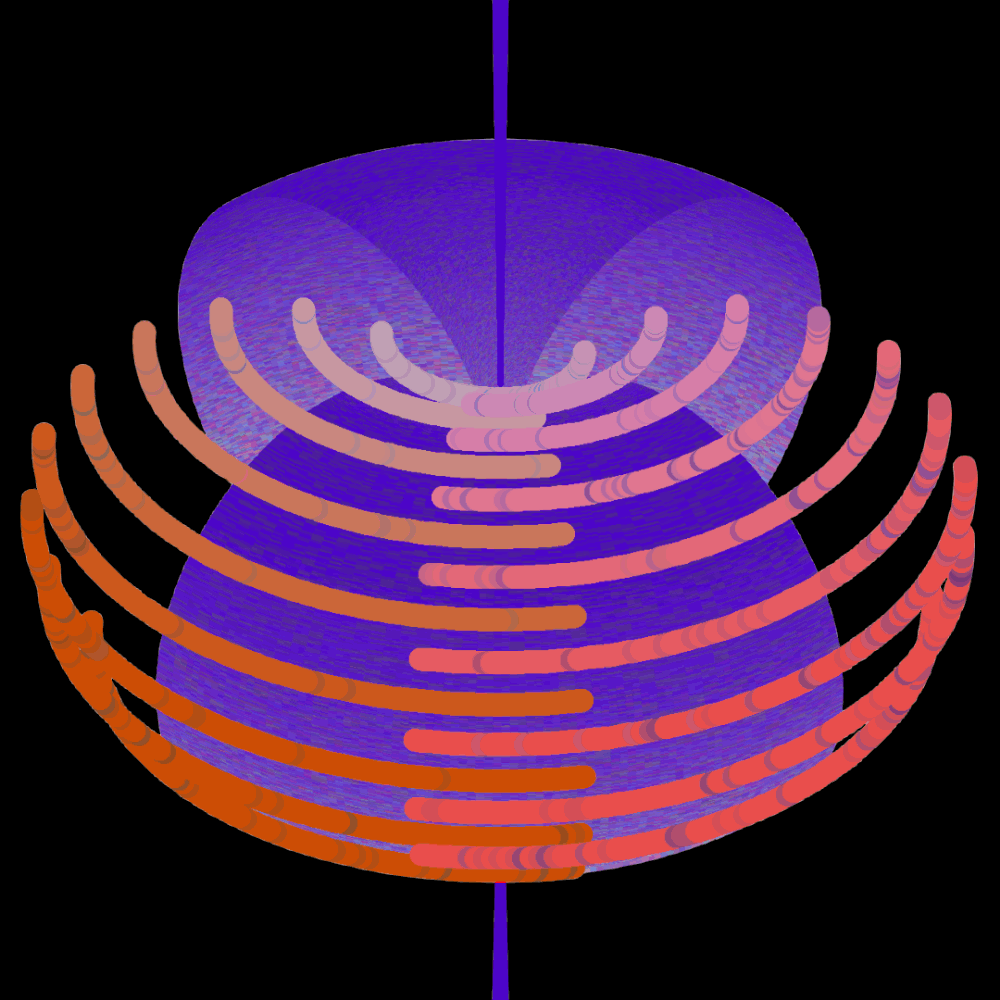Well, what could this strange horn torus animation symbolise?
Nothing real, nothing at all - it's nothing else than a mere graphical playing around!
Above animation has nothing to do with the horn torus model, described on these pages. It demonstrates what happens, when you try to implement a continuation of the three-dimensional space down to Planck scales or even lower to infinitesimal structures. Don't do that - you will fail! It might be just okay with electrons for descriptive purposes, but not with all what is 'inside the shell' they form 'around a nucleus'. There we have completely different conditions, not matching our perceptions that have been developed within the macroscopic world. There - in Planck scales - only dynamic can help to understand the processes. Static doesn't occur, and consequently static coordinates from our Euclidian space are not suitable to be applied for spatial descriptions in this realm. Nor are all linear vector spaces, and even an abstract Hilbert space will lead to misinterpretations. Try to familiarize yourself with dynamically changing coordinates instead, e.g. as uncoiling (unrolling) lines, one shown here. When you have caught the image, enjoy not ending aha-moments :-)
The horn torus model serves as a preliminary allegoric intellectual game and as inspiration to develop mathematical methods that are more suitable to cover such dynamic complexities. Crucial property of all nested (interlaced into one another) horn tori is, that they continuously perform the poloidal turn (revolution, torsion around the torus bulge), circumferential velocity along the longitudes symbolising light speed c, main symmetry axis representing time t (and additionally other values, which make time a redundant quantity!). Above animation doesn't meet the condition of continuous poloidal turn and definitely has a different origin (but is generated by means of the monoalgorithmic artmetic graphic synthesizer as well).
W. Däumler
